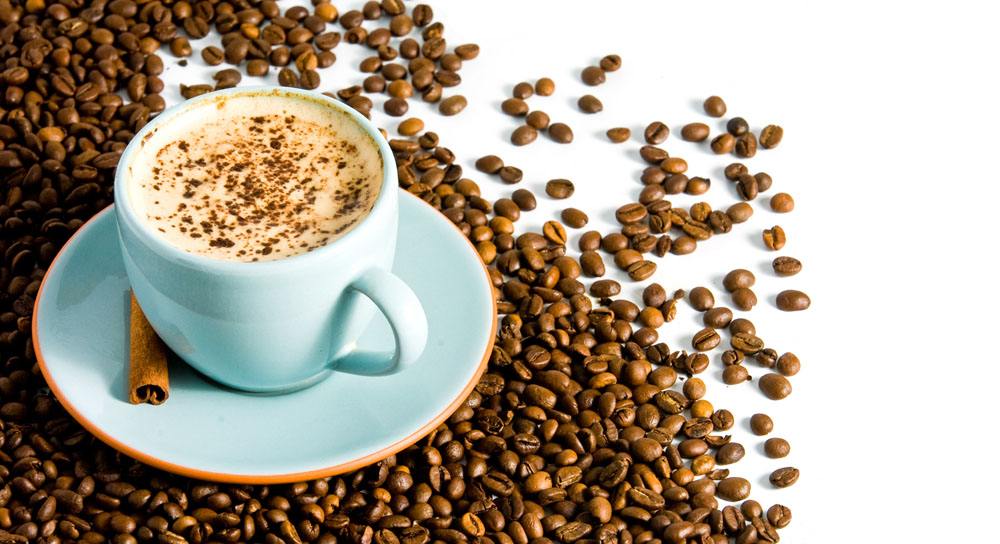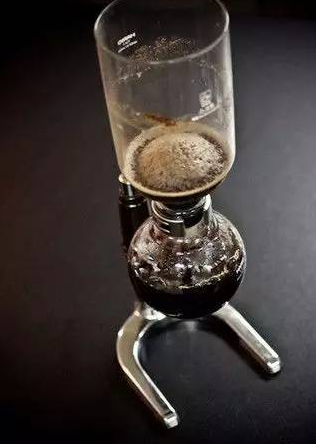Introduction to the steps of brewing coffee by blocking the wind
Follow the caf é (Wechat official account vdailycom) and found that Beautiful Cafe opened a small shop of its own.
Plug the wind is the use of soaking way, so that the water and coffee powder contact for a long time, and the use of filter cloth to filter coffee powder, so that most of the oil can be retained more intact, so you can extract a very strong coffee flavor.
Food material
Main material P.r.o. Coffee 20g extraction 180ml grinding coarse fineness 4.5 excipients plug air kettle stirring rod filter cloth thermometer small gas stove
Put the filter cloth scalded with hot water into the upper pot.
The hook of the filter cloth is firmly hooked to the bottom of the pot and the filter cloth is adjusted to the center with a stirring stick.
Pour 200ml hot water into the pot and dry the pot to prevent it from breaking when heated.
Insert the upper pot obliquely into the lower pot.
Light the small gas stove under the lower pot, and the firepower shall not exceed the horizontal level.
When there are large bubbles in the lower pot, insert the upper pot correctly, reduce the firepower to keep the hot water in the upper pot, and adjust the filter cloth to the center so that there are no air bubbles around.
Adjust the water temperature to the desired temperature (about 85-92 degrees).
Quickly pour all the coffee powder into the pot.
Stir gently and evenly with a stirring stick immediately to make sure all the coffee powder is soaked in hot water and start the clock.
Stir for the second time at 30 seconds (depending on the situation).
Stir for the third time at 50 seconds and turn off the heat at the end. (it can be adjusted according to the situation, in principle, the whole process does not exceed 1 minute.)
Wait for the coffee to flow to the next pot, at this time, you can smell the aroma of the coffee in the pot. If there is no aroma, you can wrap the pot with a wet cloth to make the coffee flow quickly to the next pot to complete the extraction.

Six steps to evaluate the cup of coffee
There are six steps in coffee cup evaluation, describing the aroma, aroma, taste, smell, aftertaste and mellowness of coffee.
1. Fragrance: the first step in cup evaluation is to evaluate the aroma of coffee beans. Grind 10 grams of coffee, put it in 3-5 sample cups, and then breathe hard at the gas released by the freshly crushed coffee cells. The characteristics of the aroma indicate the essence of the taste of coffee beans: the sweet smell indicates that its taste is sour; the pungent smell indicates that its taste is irritating. The strength of the aroma indicates the freshness of the coffee, that is, the time it takes from roasting to grinding into powder. The aroma consists of the most volatile aromatic compounds, especially those containing sulfur, such as methyl mercaptan. At present, there is little people can do about how to keep these substances in coffee beans.
two。 Aroma: the second step in cup review is to check the aroma of coffee water. First, pour 150ml of boiled fresh water into the freshly ground coffee powder and let the coffee powder soak in water for 3 to 5 minutes. Coffee powder forms a cap-shaped shell on top of the water. Stir the coffee with a coffee spoon and break the cap shell. At this time, the caffeine hot water will release the gas into the nasal cavity, so that the nasal diaphragm feel a comprehensive flavor: from fruit, grass, to nutty. The experience of cup review will cause cup reviewers to classify coffee according to the memory of various coffee smells. In the future, different kinds of coffee can be distinguished according to different odors. Generally speaking, the aroma characteristics of coffee are related to the origin of coffee. Correspondingly, the strength of the aroma is related to the freshness of coffee. Freshness is measured by the length of time from baking to cooking. Freshness is also affected by the type of packaging that protects coffee from damp and non-damp.
3. Taste (Taste): carefully savoring the taste of freshly brewed coffee is the third step in cup review coffee. Use a special coffee spoon, usually a round spoon with a capacity of 8 ~ 10cc. Preferably silver-plated, which can dissipate heat quickly. Take out 6 ~ 8cc of coffee water and put it in front of your mouth and sip it hard. Quickly inhale coffee and distribute it evenly on the surface of the tongue. All sensory nerve terminals respond to sweet, salty, sour and bitter tastes at the same time. Because temperature affects the degree of stimulation, paying attention to responses in different sensitive areas of the tongue can help capture different characteristics. For example, because temperature reduces sensitivity to the sweetness of sugar, acidic coffee initially produces a tingling on the tip of the tongue rather than sweetness. Hold the coffee in your mouth for 3-5 seconds and focus on the type and intensity of the taste. In this way, primary and secondary flavor characteristics can be evaluated.
4. Nose: the fourth step is the same as the third step. Inhale coffee through the surface of the tongue. Due to the change of water vapor pressure, part of the organic matter in the water changes from liquid to gaseous state. The act of sucking coffee hard causes the gas to enter the nasal cavity, allowing cup reviewers to analyze the smell of coffee. At the same time, evaluate the taste and smell of coffee, so that cup reviewers feel the unique flavor characteristics of coffee. Standard roasted coffee usually has the taste of caramelized products, while deep-roasted coffee usually has the taste of dry distillation products.
5. Aftertaste (Aftertaste): the fifth step is to put coffee water in your mouth for a few seconds, then swallow a small part. Quickly suck the throat to send the water vapor left in the back palate into the nasal cavity, you can find the smell of the heavier molecules left in the back palate. The aromas of various compounds felt in the aftertaste are sweet, similar to chocolate; or bonfire smoke, or cigar smoke; sometimes, there are similar irritating spices, such as cloves; sometimes, like resin, similar to turpentine; sometimes, there are all these smells.
6. Body: the final stage of cup review is to evaluate the taste of coffee water. The tongue slips gently across the palate of the mouth to feel the texture of the coffee. The feeling of oily quality and smoothness can measure the fat content of coffee water, while the feeling of "weight", thickness and stickiness of coffee can measure the fiber and protein content of coffee. The two make up the mellowness of coffee.
Important Notice :
前街咖啡 FrontStreet Coffee has moved to new addredd:
FrontStreet Coffee Address: 315,Donghua East Road,GuangZhou
Tel:020 38364473
- Prev

Water temperature parameters of plug kettle
Practical parameters of water temperature: boiling / boiling in hot water at high temperature: 88 ℃ ~ 94 ℃, suitable for shallow baking to medium baking pot straight insert: soaking water temperature range, 88 ℃ ~ 94 ℃ upper pot first oblique plug and then straight plug: bubble boiling water temperature range, 90 ℃ ~ 95 ℃ if deep baked beans are boiled at high temperature, add some cold water in the upper pot so as not to be too bitter * the final extraction water temperature of high temperature boiling should not exceed 94 ℃, which can be suppressed.
- Next

These coffee gadgets make it easy to make your own coffee!
What's the magic of coffee? Why does this cup of coffee beans become the spiritual food for urban people all over the world? Many people like to have a cup of coffee every morning as a good start to a whole day's work. But when you start to get a little numb to the coffee on the market, or get a little tired of hurrying into the coffee shop every morning, have you ever thought about it?
Related
- What is the Philharmonic pressure? How to use Philharmonic pressure to make delicious coffee
- Why does a hand grinder have more fine powder than an electric grinder?
- In addition to the hot mom, what is the difference between the versions of EK43 | ditting and Mahdi ek43?
- What kind of equipment do you need to make coffee by hand? Introduction to novice starter cooking equipment tools
- Espresso needs to be ground how thick and thin scale entry Italian Coffee Machine Bean Grinder investigation and Grinding course
- How much does it cost to open a small private cafe? How much does it cost to learn coffee? How to operate it?
- The difference between the flavor characteristics of hand-brewed coffee and coffee maker is hand-brewed coffee really better than coffee maker? Can I use a coffee machine to make coffee beans by hand?
- The difference between 01 and 02 of hario v60 filter cup what is the difference between 01 and 02 filter cup opening and cooking flavor
- What's the difference between the smart cup and the French kettle? Which is better, the French kettle or the Smart Cup?
- What's the difference between a smart cup and a V60 filter cup? The difference between the taste of smart cup and hand-brewed coffee

